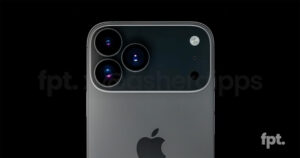Future iPhones and Apple Watches could suggest services based on your location and daily routine — Apple World Today

[ad_1]

Then, upon receiving a user input specifying a destination, the iPhone can display a route from the current location to the destination, and an estimated time of arrival based on traffic information on the route. This process also applies to the Apple Watch.
Apple’s goal is to take it a step further by allowing devices to learn a movement pattern and adapt itself to that movement pattern. The iPhone or Apple Watch can provide predictive user assistance based on the movement pattern without requiring additional user input, including. For example, it can alert a user of traffic conditions while the user is en route to a significant location if the mobile device determines, based on past movement patterns of the mobile device, that a user will visit the significant location, even when the mobile device didn’t receive a user inquiry.
Apple says this means that a user of the mobile device may have a better experience using services, especially location-based services, of the mobile device. For example, the mobile device can determine that a user usually goes from home to work at 8:00 am on weekdays and from home to a gymnasium at 8:00 am on weekends. Upon being turned on shortly before 8:00 am, on weekdays, the mobile device can automatically display traffic information on a route from home to work; whereas on weekends, the mobile device can automatically display traffic information on a route from home to the gymnasium.
Here’s the summary of the invention: “Systems, methods, and program products for providing services to a user by a mobile device based on the user’s daily routine of movement. The mobile device determines whether a location cluster indicates a significant location for the user based on one or more hints that indicate an interest of the user in locations in the cluster.
“The mobile device can perform adaptive clustering to determine a size of area of the significant location based on how multiple locations converge in the location cluster. The mobile device can provide location-based services for calendar items, including predicting a time of arrival at an estimated location of a calendar item. The mobile device can provide various services related to a location of the mobile device or a significant location of the user through an application programming interface (API).
[ad_2]
Source link


